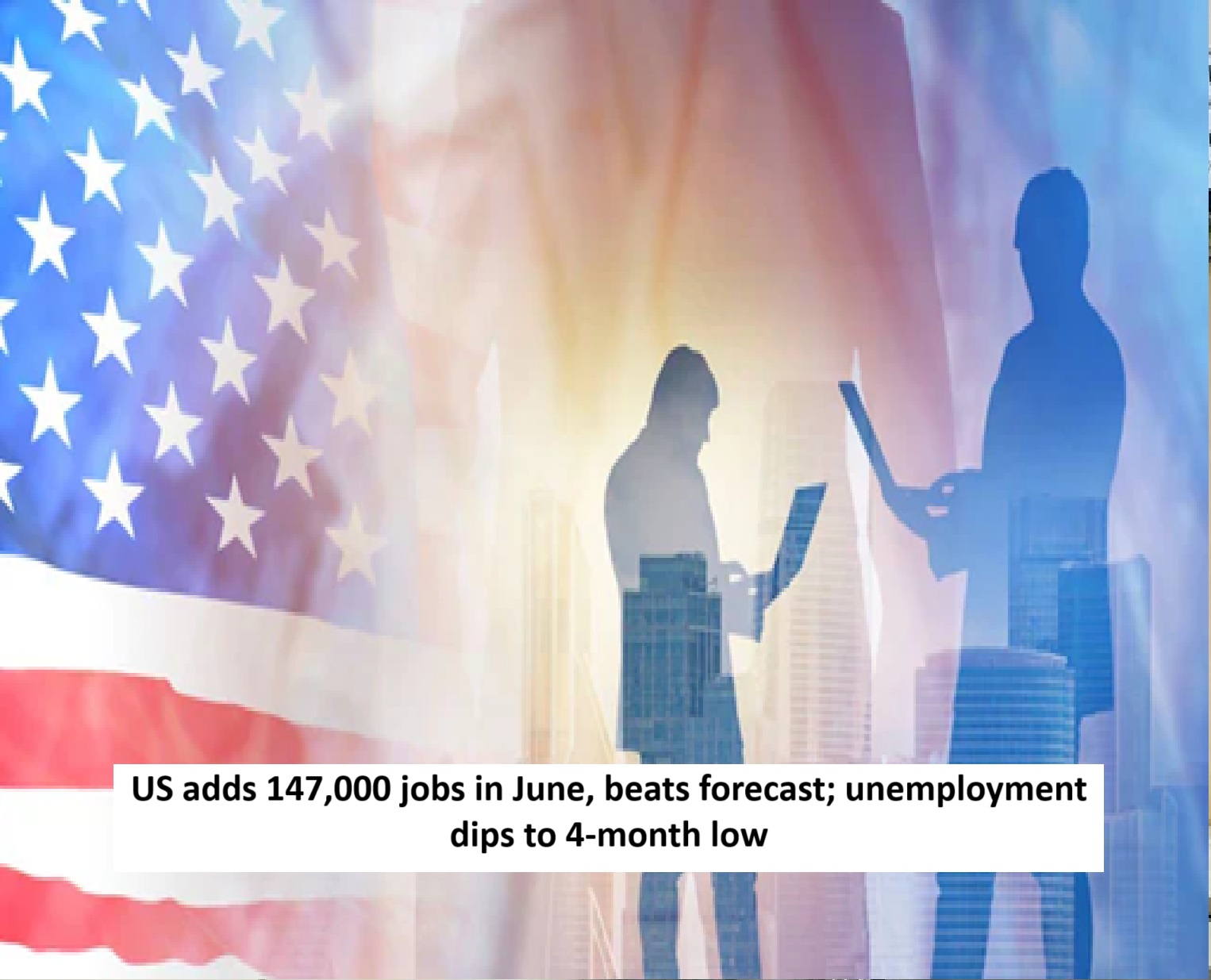
News Topical, Digital Desk : The US labour market showed surprising resilience in June, with non-farm payrolls rising by 147,000 — comfortably ahead of the 110,000 expected by economists.
The Bureau of Labor Statistics also revised May’s figures upward to 144,000, while April’s tally was lifted slightly to 158,000.
The unemployment rate edged down to 4.1%, the lowest since February, against a forecasted uptick to 4.3%. A broader measure of unemployment, the U-6 rate — which includes discouraged jobseekers and part-time workers seeking full-time roles — fell to 7.7% from 7.8%.
Despite the job gains, the drop in unemployment was largely driven by a fall in labour force participation. The participation rate fell to 62.3%, its lowest since late 2022, as the number of people not in the labour force surged by 329,000. Of those, 234,000 had not searched for work in the past four weeks.
Wage growth remained steady, with average hourly earnings up 0.2% month-on-month and 3.7% year-on-year — offering little sign of wage-driven inflation. The average workweek ticked down slightly to 34.2 hours.
Government hiring led the gains with 73,000 additions, particularly in state and local education, while federal jobs declined by 7,000. Healthcare added 39,000 jobs, and social assistance contributed 19,000. Full-time employment jumped by 437,000, offsetting a 367,000 decline in part-time roles.
Private payrolls rose by 74,000 — significantly stronger than the 33,000-job loss reported by ADP earlier this week, easing fears of a sharp slowdown in hiring.
The upbeat labour data has effectively taken a July interest rate cut off the table. Market odds for a move at the Federal Reserve’s next meeting dropped to just 4.7% from nearly 24% the day before, according to the CME FedWatch tool. Traders are now pricing in a possible cut only by September, and are scaling back expectations to just two rate reductions for the year instead of three.
Markets reacted positively, with equity futures holding firm and Treasury yields spiking, reflecting improved economic sentiment — and reduced urgency for monetary easing.
Read More: Open offer made on Supreme Court decision, but no deal, 0 shares accepted, know the whole matter
--Advertisement--

 Share
Share



